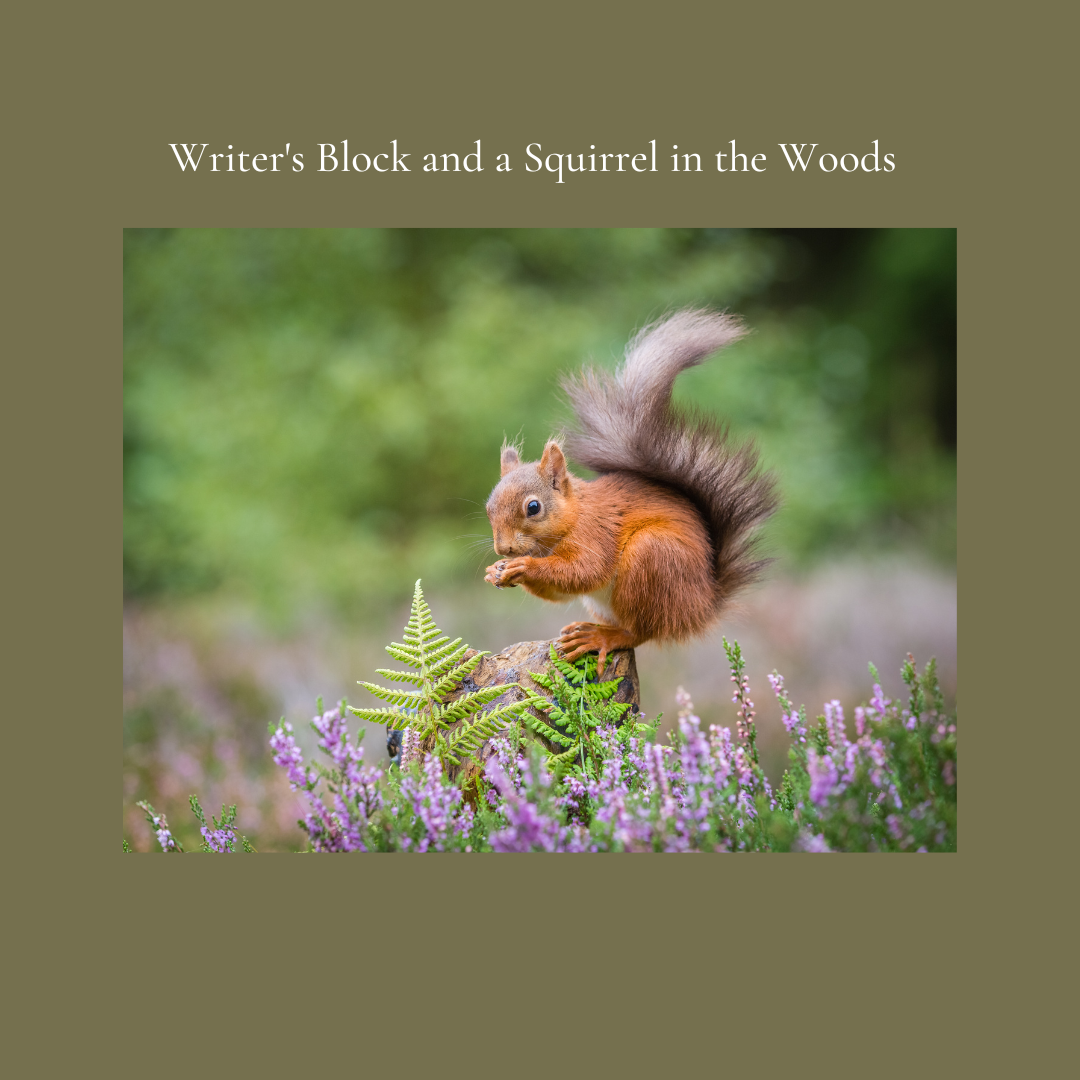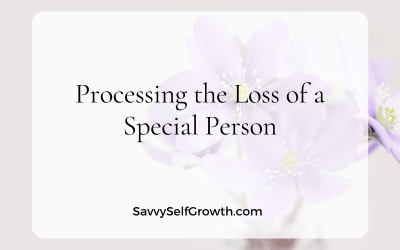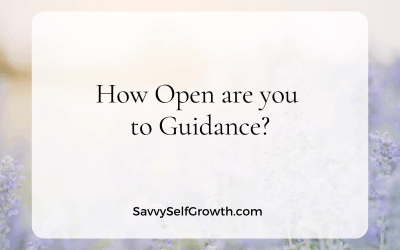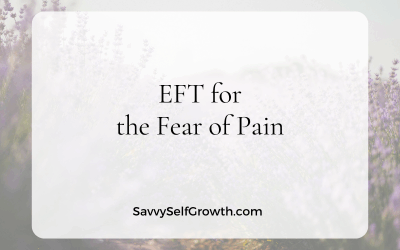In this article, I’m going to illustrate in a fun way, what happens in our brains when we encounter something that feels scary.
I hope you can join me as I take you on a little journey into the woods behind my house.
This morning as I sat down to write my newsletter, I couldn’t decide what to write about. Actually, the stress about it started on Friday already. Usually, by then I have an idea… and I noticed several times over the weekend thinking, “I still don’t know what to write about!” Every time I felt a twinge of pressure.
I also woke up really tired this morning. I usually feel inspired or have a flash of an idea when I learn something, so I decided to read first. And yes, it did bring some ideas, hallelujah!
I started writing and after 30 mins noticed I didn’t like the direction it was taking. It seemed like a dry academic paper, and it was getting more laborious by the minute.
I felt like a fly struggling inside a spider’s web. I tried thinking very hard about how I’d get out of this web I’d spun around me. Time pressure was on — I still had so much I wanted to do. And then I realised my brain was feeling overwhelmed. It still didn’t feel like the ‘right topic’. And even it if was, writing wasn’t flowing.
Overwhelm
After a short struggle about what direction to steer the article in, I remembered an overwhelmed brain can’t make any decisions. I needed to get away from the situation for perspective.
I’m extremely fortunate to live right by the woods and there’s a walk I haven’t been on for a while. I could feel my energy lift as I thought about this route!
Within 5 minutes of being outside, I started to relax. I felt the smile, and heard the sigh of contentment and happiness that came from my body. Yes, this was the right decision. I saw the beautiful bright blue sky, felt the sunshine on my white UK skin… (lol), and relaxed even further. What joy, to be outside on a cloudless day. They don’t come around often in the UK.
When we step away from a difficult situation, we ‘break state’. The stressed state I was in, was not conducive to any creative thinking. My brain had shut down and I had what some people would call ‘Writers’ Block’. I was feeling pressured and not enjoying my writing at all.
I often use my walking time to bring in some easy, daily tapping and this was the perfect opportunity. ‘Intention Tapping’ or IEP is the form of EFT I use these days. It’s incredibly simple yet deliciously powerful. All my clients say that too!
So as I walked, I tapped on releasing all my emotional attachments to writing the perfect article. Then I released all my emotional attachments to finding the perfect topic. I realised that was the first bit of pressure that kept me stuck. Under the surface was the idea that I had to make every newsletter count. Who would read anything boring? That’s a lot of pressure…
Introvert and HSP Brains
It dawned on me how many of my HSP or introvert clients battle with this exact thing.
One sweet person the other day was not doing her homework tapping, because she felt she had to understand the process perfectly before she could start. It stopped her from even doing a small bit of tapping.
Introverts want to think things through very thoroughly before they feel safe to dive in and try something.
Unfortunately, this holds us back from learning and making any progress. If we don’t start, we can’t learn anything from our efforts. And we can’t feel the thrill of “I DID it and I didn’t die! I feel fantastic!” <grin>
I was doing the same thing here. Wanting the perfect topic and the perfect article kept me stuck. It prevented the enjoyment and flow of writing I usually feel.
Insights
As I walked and tapped, more connections and insights happened. It felt glorious to have free-flowing thoughts again, instead of a struggle! Every now and again I stopped to take a photograph of a scene that made me feel deeply grateful for the walk.
Nature often brings me wonderful inspiration and perspective. The brain that is free to roam can make connections between seemingly random things. Memories of client sessions flooded in to help me understand the book about trauma that I was reading this morning even better.
A sound and a beating heart!
Suddenly, I heard rustling in the dry leaves next to the path. It’s very dry here now and every leaf makes a crinkly, crunchy sound. I stood still to try and see where the sound came from…
This morning I was reading exactly what happens in our body and brain when we encounter things like trauma. So here it is, in a nutshell. It took ages to write it down, yet it happened in about a millisecond. (This event was not traumatic, fortunately! It just helped me illustrate a point.)
Amy and Theo
I hear an unexpected sound. My thalamus (let’s call it Theo) collects all the sensory data of that moment. The sound of the leaves crunching, my eyes not seeing anything obvious… The birds singing in the background. Green leaves. Blue sky.
Theo Thalamus sends a message to the amygdala (we’ll call it Amy): “Hey, Amy — here’s a bunch of things that are happening right now. Check if you find anything dangerous here and send an alarm if necessary, will ya?”
Amy replies, “On it.” Amy is like the smoke detector of the brain: she deals with whether any incoming input is relevant for our survival. It gets help from the hippocampus nearby, which stores memories from the past.
This same message with all the data also goes to a part of my prefrontal cortex (specifically called the Medial Prefrontal Cortex, right above the eyes). We’ll call it Molly. The message reaches Molly a few milliseconds later. Molly is like the watch tower of the brain, looking at everything from a higher, more rational perspective.
Amy reacts…
Amy rustles through her database of dangerous sights, sounds, smells, colours, sensations, tastes… And goes “Well ya know, from what’s happened before, this sound could be a snake, it could be a dangerous person, a predator, could be just a harmless bird…. can’t tell for sure!”
Just in case (because the source of the noise is still unknown), she sends a message to the hypothalamus (Hypey) to say “Possible danger up ahead, let’s get moving…”.
Hypey, which is like the pharmacy in the body in control of mixing the right chemicals (hormones) in the body, sends a signal to the adrenal glands: “Hey, Adrenals — make some adrenaline and cortisol, prepare for a possible situation here….”
My heart starts beating slightly faster and my pupils widen to be able to see better.
And phew, in that very moment I see the squirrel run out from the undergrowth. It’s far more terrified than me, I bet — and runs a mile a minute to get away from this big shape that seems really threatening.
In that moment, this happens in the brain:
Amy (who has just received the new sensory input (*sight of squirrel*) from Theo, rummages through her database again and recognizes the squirrel. This data is also, again, sent to Molly.
Amy sends a signal to Hypey: “All okay — harmless squirrel!” The adrenals stop making adrenaline and the cortisol that was already circulating helps my body to get back to a normal state.
Molly, who is now fully online and alert, and got the data milliseconds after Amy, also climbs in with soothing: “It’s okay, girls, we can all relax now — it was just a squirrel. Really, calm down. We’re safe.”
See how long it took to describe and understand this? Yet all of it was happening underneath the level of anything I was aware of and took only a second in total.
Amy checks between 12 and 100 times per second if incoming data sent by Theo needs an alarm. By the time Molly realises what’s going on and can say “Calm down everyone, just a squirrel!”, Amy has already set off the fight or flight response. She’s really looking out for our safety. We can be grateful for her!
The trouble comes in when Amy sends unnecessary messages to Hypey, because of previous trauma. More about that later.
A few thoughts on perfection:
As children, we all learn unique thinking, feeling, and behaviour patterns to keep us safe in the world. Some of us get praise for achievement, or love for being a perfect little boy or girl, and criticism for not doing things right.
Those patterns stay with us even though we grow into well-functioning adults. Those patterns might not be helpful anymore, yet the parts of our brain that learned those survival strategies (once upon a time), simply don’t know how to do things any differently.
Many clients come to me believing they must be perfect at all costs. And it can stop them from making any progress, and cause them to be in fight-flight-freeze much of the time. Their Amy and Hypey are working overtime!
HSP’s and perfection
HSP’s might feel this even more acutely. Their nervous system processes sensory input more intensely, even from childhood.
Most of my clients had childhoods where unpleasant things took place over and over, so it may take a little time to help Amy realise most things are safe. It’s no wonder their Amy is on the jumpy side — like a well-practiced muscle, she got very strong.
That’s the work we do in sessions: We teach their Amy to be a little less jumpy. So that Molly can have a better chance to point to the squirrel and say “All okay, nothing to fear here.”
Tips for overwhelm:
Here are a few things you might try the next time you feel overwhelmed, tired, stressed, and simply cannot concentrate.
Mindset first:
There is no perfect anything. Really. None.
Whose version of perfect anyway? There are 8 billion people.
When we at least jump in and give it our best, we give ourselves a chance to learn. A course I did a long time ago, taught us “The Universe supports action, not thought.” We have access to a real-time feedback system, yet we won’t get feedback if we stay stuck in the same thoughts.
When there’s overwhelm, it’s useful to step away to get perspective. Would the topic of my article still matter a month or even a week from now? How important is the ‘perfect’ topic really, given the bigger picture?
We can make a difference for someone even with imperfect action. Every time I write an even imperfect article from the heart, someone writes and thanks me. It always astounds me.
We give ourselves the chance for different experiences if we get out of a stuck thinking loop. If I kept stressing about the perfect topic, I would not have met the squirrel in the woods, nor felt so energized after my mid-morning walk. And you would have given up on reading a dry, boring article!
For introverts and sensitive people, a recharge in nature is a must. It offers perspective, we get in tune with the rhythm, calmness and peace of nature. It settles our nervous system very quickly.
By the end of my walk, I had multiple ideas for articles and felt inspired, energized and grateful… an altogether different energy to write from! The result is what you’re reading now.
Practical ideas for overwhelm:
Step away from the task. We call it “break state” in NLP. Literally, moving our bodies in a different way can break the emotional state we’re in.
Use EFT. This is the mainstay of my calming practices. It changes our state very fast because it literally sends a signal to Amy to say “We’re safe!” So Molly can come online and think clearly and calmly, make decisions and set goals.
Go for a walk: long, short, anything — it doesn’t matter. Walking, or other repetitive motion, also calms the body and brain. We won’t be doing anything repetitive if we’re really in danger, will we? And the brain structures know this.
When our medial prefrontal cortex (Molly) is online (after Amy has calmed down), we can use this tip from my marketing mentor, George Kao:
Narrow your choices down to 3 points. For instance: If I can only write about 3 things today, which 3 would that be? Of those 3, which is the most inspiring to me right now? Set a timer for 5 minutes, and just make a start. And remember — no perfection — only progress. He teaches more tips like this in his Joyful Productivity course.
May your life today be filled with calmness and an Amy that is not too jumpy! And if your Amy is a little over-excited about raising smoke alarms, get in touch for a conversation. There definitely are a few ways we can help Amy.




